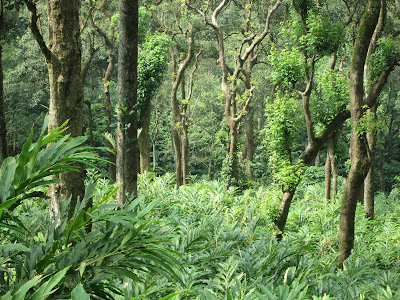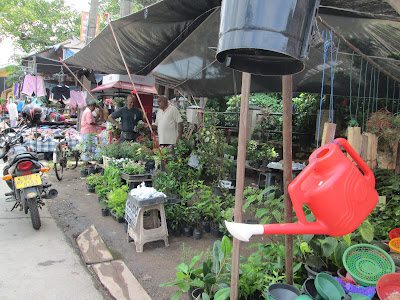I have a new favorite green leafy vegetable these days. In Hawaii and the US, it is called Perpetual Spinach, but I was first introduced to it a few years ago as Perpetual Silver Beet in New Zealand. It is a member of the Beet family and so it does a have a light Swiss Chard/Silver Beet flavor. I tried growing the seeds a few years ago but they did not do well but decided recently to give it another go when I bought some young plants from a nursery here. I am pleased to say that these have done well, and I have become a big fan of this plant.

I only have four Perpetual Spinach plants growing in a large container along with two kale plants. Enough for one person meals. I added compost to the container before planting and I do have netting over the top, mainly to keep the white butterflies away from the kale, but also to keep the birds from getting interested in the spinach leaves. Now that the plants are a few feet high I am harvesting a few leaves at a time to add to salads and stir fries. I tested the taste of the Perpetual Spinach to see how strong the Chard flavor was by just eating leaves that had been boiled for five minutes. (This is the way it was eaten in New Zealand in my childhood years.) Yes, there is a bit of Chard flavor, but it is very light. I ate it with a grating of cheese on top and decided it made a very nice side dish. I am trying to eat more leafy greens these days to support my little gray cells. If you throw the Perpetual Spinach leaves into a stir fry or a quiche you do not notice the Chard flavor at all. I think this is why it is called Spinach in the US because it is a more familiar green leaf flavor for Americans. In New Zealand you grow up on the flavor of cooked Chard. (It was interesting to see the same in coastal Croatia last year although I found out that Chard cooked in lots of olive oil was very different!) As you would expect of any green leafy vegetable, Perpetual Spinach is high in vitamin A along with lots of other good nutrients including having good amounts of vitamin K.
The best thing about Perpetual Spinach is that it is a tough easy plant to grow. It is a biennial so you can expect it to live for two years. I have seen video of a gardener dividing baby plants off a large mature root like you would for taro. Hopefully my plants will get to the point that I can try doing that. It has big sized seeds which is helpful in spacing when sowing seeds which is the usual method of propagation. Space the plants 6-8 inches apart.

In the tropics Perpetual Spinach prefers the cooler time of the year and likes to be in semi-shade. Hot weather slows down leaf production. I have mine growing in the sparse shade of a curry leaf tree and it seems to like it there. The soil needs to have good drainage and a high organic content. High nitrogen feeding helps push out the lush leaves. The most important thing is to keep the soil moist, especially in the summer. Just as well my container is positioned near the hose by the kitchen door. Mulching is good to help keep the soil moist. You need to keep an eye out for slugs too. That means night time inspections around 10pm.
Aloha
Nov. 2024
Below is a photo of my latest Perpetual Spinach that I am especially proud of because I grew these plants from seed. I need work on my seed growing skills so am always asking master gardeners how they do it. I think if helped to not transfer the seedling out until they were several inches high and had some reserve of strength. My first lot of Perpetual Spinach in the photos above got overtaken by the powerful kale plant.
























































